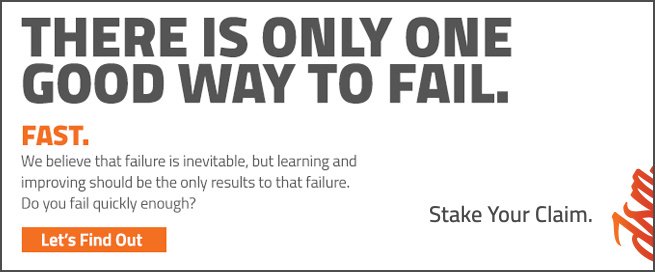Business succession is a big undertaking and it’s a major turning point for many successful business owners. Certainly, there’s no shortage of things to think about during the process, but there’s one thought that is often forgotten. What is the value of my brand itself and how can I better plan for this element during my succession? The value of an organization’s business succession marketing efforts has a direct correlation to both the value of the company and its ability to generate revenue for the next generation. Leon Grassi – SVP, Sales & Marketing for DSM, and Steve Holt – Partner of Mandelbaum Salsburg P.C. discuss the importance of a brand value in business succession and marketing’s overall impact on a successful business.
LEON: What are the things a business owner most often forgets during succession planning?
STEVE: Well, I think some business owners have a tendency to ignore how important it is to keep employees incentivized to remain once the business’s succession is complete. These employees are vital to the business, its identity and operations. They’re the foundation of the company and keep things moving forward, especially when the owner is no longer in the picture.
In the event that the business is a family business, all members involved need to be treated and consulted equally, especially in regard to bequests or gifts of their assets. Some family members may not be active in the process of planning this transfer of equity. When a business is transitioned to both active and non-active family members, the active participants need to remain in control of management and the business’s eventual sale. All of this has to be done in communication with non-active members, with knowledge of the equity stakes they hold. Essentially, with a family business, communication is imperative in making sure the transition happens smoothly.
LEON: How often do you consider the value of a brand during your discussions with a business that is developing succession plans?
STEVE: Always. There’s no denying how important a business’s brand is, especially during the process of business succession marketing and planning. A strong brand paves the way for margin growth. It improves market positioning, enhances cash flow and ultimately increases the value of the business. Investing time and efforts in branding is a no-brainer. Without a strong brand, how will the business carry on and remain intact throughout the succession?
LEON: At a high level, what process do you walk a business owner through when he or she contacts you with interest to succeed their business?
STEVE: Before getting into the planning process, I need to know the basics. I think it’s important to learn about the company and its owners, as well as their values and goals before advising. We discuss what management is in place, what business risks they face and what their market position is. If the business is a family business, we have a discussion about the owner’s goals for succession planning in respect to his or her family.
I then introduce alternatives to transition to make sure that a succession plan is the best option for that particular business. I help the owner weigh the options of his or her business’s succession. Each plan includes specifics that are fully detailed during this process. I also carefully spell out tax implications, alternatives to planning any transition for maximum income realization, and other aspects like potential estate tax savings and ways to defer income recognition.
I hope to end these conversations with a feeling that the business owner is equipped with any and all information he or she needs to make the right decision. My goal is to ensure that the business owner feels comfortable and understands how to move forward with the process.
LEON: When should a business owner start to consider succession plans?
STEVE: I believe one of the biggest reasons many businesses succession plans fail, especially in the family wealth transfer setting, is because the planning process began too late in the game. In these instances, the planning is delayed due to procrastination or lack of knowledge. Other times, the business owner or another key employee exits and there are no plans set in stone for the business’s continuation and value preservation.
Having said this, business owners should always be considering a succession. They should operate their business as if a sale could occur at any moment. He or she should have things set so that another individual would be able to take control of operations if need be. This requires organization and ensuring all loose ends are tied up. The business should be financially sound. Quality management should exist with potential transitional management locked and loaded.
LEON: What type of exit or succession options are available to business owners who are considering exit planning?
STEVE: That’s a good question. It’s safe to say that the type of plan available to a business owner depends on what type of business he or she is in charge of.
I like the business to consider alternatives to transition. Is the business a family business? If so, I speak about the option to create a family wealth transfer plan utilizing lifetime gifts and/or transfers at death. For this type of plan, the owner must consider which family members would be designated as beneficiaries and what measures could be taken to protect a surviving spouse. This plan incorporates wealth equalization strategies, and when necessary, ways to transition the business to employees through a sale or other incentive plans. On a similar note, the business owner can also consider the sale of all or part of his or her business, whether outright or in the form of a merger or a different means of reorganization.
STEVE: Well, what are some things I should consider pertaining to the brand of the business during a succession or exit?
LEON: There’s no simple answer to this question. There are so many variables associated with building a successful “brand,” and I don’t just mean the business itself. A brand is something that has the ability to stand on its own, something that holds value with or without the owner and other employees. This doesn’t just mean the logo or the business’s name. A brand represents the messaging, tone and aesthetic. These are elements that need to be reviewed and reworked on a regular basis to stay up-to-date.
The value of a strong brand in business succession marketing is an important thing to consider during what will be a time of significant change. Businesses inevitably change, clients will change, and sometimes ownership changes. This is the best time for the business to determine if all the aforementioned elements align with the expectations of the business’s current and future goals, as well as its clients’ needs and goals. It’s a chance for the business to start refiguring and revamping their brand from the bottom up.
For example, many small privately owned businesses see the brand as the owner himself or herself. This is a tough obstacle for a new owner to overcome. By building a brand that can stand on itself prior to a transition, the business can avoid some of the common pitfalls associated with sales and succession.
STEVE: In other words, the brand is the business’s goodwill and the goodwill of a successful business is its most valuable asset. When negotiating over the purchase price in connection with a sale of the business, a significant amount of time is devoted to determining the goodwill (brand) value and focusing on strategies and efforts undertaken by the business to protect its brand. These efforts include attempts to secure and protect intellectual property such as trademarks and defending against threats against intellectual property that is the indicia of the brand. Too often the price will be lower than expected because the owner has left the brand open to piracy.
How do you approach evaluating a brand’s strength in an established business?
LEON: There are a few logical steps to this process. Most times, the best resource for information on a company and its brand are existing clients. Many marketing agencies routinely survey their current clients, as well as past clients and prospective clients on their perceptions of a brand.
In many cases, it’s forgotten that extremely useful information can be gathered from the employees of an organization as well.
Beyond this, there are some really great tools available to digital marketers. The digital space has become a source of tremendous data. By leveraging the tools at our disposal, we can review a brand’s strength in the digital space and the voice it shares with its audience, in addition to the other metrics that measure how well the brand performs online.
STEVE: Is there a reasonable amount of time for someone to improve the value or perception of their brand in the marketplace?
LEON: At the risk of sounding like a salesperson (too late)… it largely depends on the desired budget. There are some brands that have stood the test of time and have built a reputation on longstanding, consistent marketing. However, there are other brands that make a big splash in a very short amount of time. At its very core, marketing is ultimately driven by reach and frequency. The more people you can get your message to and the more frequently you can deliver that message, the more likely your brand is to have recall value, making an impact.
This type of impact, theoretically, can be achieved in as little as 4-6 months if you can afford to flood your marketplace with the right brand message. Today, we have the advantage of social media and its “influencers”. These are people with a large social following. They command attention and have the buying power of their followers. We have seen brands rise very quickly from the involvement of key social influencers but of course, this comes at a cost.
There’s a link between the value of a strong brand in business succession marketing and time. Ultimately, there’s no replacement for time. Building an established brand can take years, but tactical short-term marketing efforts can also be effective. It is in your best interest to get ahead of this early on in your succession planning. Marketing should be considered an integral piece of the puzzle.
STEVE: In the current marketing landscape of 2018, what are some of the new technologies or methodologies available to help establish a brand?
LEON: Marketing and branding have changed substantially in recent years. This change has been driven almost entirely by advancements in technology and data science. For years, marketers made a lot of guesses- educated guesses, but nonetheless guesses that were based on limited access to actionable data. We had the simple things: high-level demographics and consumer behavior data from third-party insight companies. Back then, we used this data to craft our strategies and creative execution.
Today the game is completely different. Almost everyone walks around with a tiny supercomputer in their pocket. We all click accept to terms & conditions without reading the implications. Despite these implications recently becoming a public concern, (In Zuck we trust) the flow of data shows no signs of stopping.
As a result, marketers have access to tremendous amounts of real-time data. Data that sheds light on things like consumer habits, shopper insight and trends, traffic patterns and a mountain of valuable information that can be used to make better decisions pertaining to marketing programs.
Remember those guesses I mentioned earlier? Well, we don’t have to take them anymore. Now we can put the right message in front of the right person at the right time. We can do this much more efficiently.
So what does this mean as far as the value of a strong brand in business succession marketing? For one, it’s never too late to build a brand on the foundation of a solid marketing program that will yield results in your sales and business development efforts. There’s a direct correlation to the value of the business as a result.
STEVE: With these advances in technology, brands need to remember to take necessary legal action to protect what they build.
What are some of the marketing tactics, technologies and methodologies that a business owner can employ when considering a succession plan?
LEON: In terms of the value of a strong brand in business succession marketing, digital marketing can tactically yield the greatest bang for your buck. Having said that, we know of many well-established businesses that have grown through old-school relationship-based business development- aka “word of mouth”.
“Word of mouth” is an irreplaceable practice that should not be underestimated as it has helped build many successful businesses. However, we believe that your business’s website should be your #1 salesperson. In the current marketplace, if you’re not on the first page of Google, you’re not relevant. Is there even a second page? I certainly have never been there- it’s like the digital Bermuda Triangle. The practice of creating optimized content on a well-built website is crucial for almost all small-medium sized businesses, regardless of the industry. All things considered, a well-designed website is a relatively cost-effective solution that is driven to generate leads and build a platform to enable more effective selling.
If you’re considering succession, creating a robust digital marketing program will improve the value of your brand and organization, ultimately making it easier for the next generation of your business.



